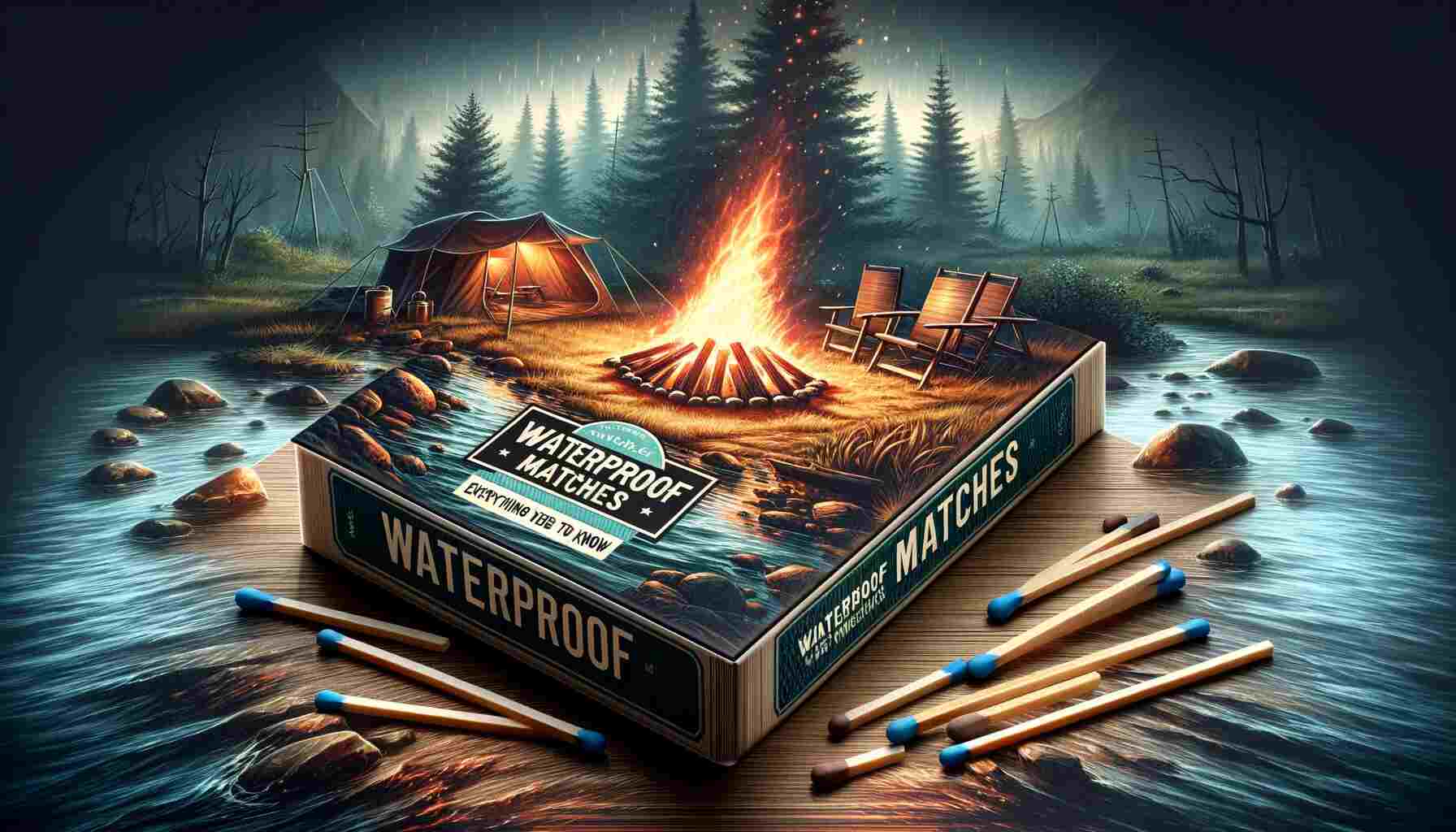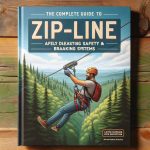Waterproof matches are a versatile and invaluable tool for outdoor enthusiasts, survivalists, and anyone who enjoys spending time in the great outdoors. These remarkable fire-starting devices offer reliability and convenience in wet or challenging conditions. In this comprehensive article, we will delve deep into the world of waterproof matches, exploring their history, composition, usage, and safety tips. By the end, you’ll be well-equipped with all the knowledge you need to make the most of these indispensable tools.
The Origins of Waterproof Matches
History of Matches and Waterproofing
Matches have a long and fascinating history, dating back to ancient civilizations. The concept of igniting a fire with a simple strike has evolved over time. In the 19th century, a breakthrough occurred with the invention of phosphorus-based matches. However, they were highly flammable and unsafe. It wasn’t until the 20th century that waterproof matches as we know them today began to emerge.
The credit for the first waterproof match goes to Johan Edvard Lundström, a Swedish inventor, who patented his creation in 1885. These matches were coated with a layer of wax to make them impervious to moisture. Over the years, advancements in waterproofing techniques have led to the development of more reliable and safer options.
Pioneers in Waterproof Match Production
Several companies have played a pivotal role in the production of waterproof matches. Notable among them is UCO (Utility, Comfort, and Originality) founded in Redmond, Washington. UCO is renowned for its long-lasting and dependable Stormproof Matches, which have been a staple among outdoor enthusiasts for decades. Other companies like Zippo and Coghlan’s also produce high-quality waterproof matches.
How Waterproof Matches Work
The Science Behind Waterproof Matches
Waterproof matches are designed to resist moisture and ensure they can ignite even when wet. The secret lies in their unique composition. These matches typically consist of three key components:
- Match Head: The head contains the igniting agent, which is often a mixture of phosphorus, sulfur, and an oxidizing agent. This combination creates the necessary heat for ignition.
- Stem: The stem, made of wood or cardboard, acts as a fuel source, sustaining the flame once ignited.
- Waterproof Coating: This is the outer layer that shields the match head and stem from moisture. It’s usually made of wax or another waterproofing material.
Composition and Construction
The waterproof coating is the critical element that sets these matches apart. It forms a protective barrier around the match head and stem, preventing water from reaching the ignition source. This waterproof layer is meticulously applied during the manufacturing process to ensure its effectiveness.
Types of Waterproof Matches
Understanding the Various Types
Waterproof matches come in several varieties, each with its own set of characteristics. Here are some common types:
- Stormproof Matches: These matches are built to withstand extreme weather conditions, including wind and rain. They burn for an extended period, making them ideal for survival situations.
- Safety Matches: Known for their safety features, these matches require a specific striking surface to ignite, reducing the risk of accidental fires.
- Windproof Matches: Designed to stay lit in windy conditions, these matches are ideal for outdoor adventures where gusty winds can be a challenge.
- Backpacking Matches: Lightweight and compact, these matches are tailored for backpackers and hikers who need a reliable fire-starting solution on the go.
Advantages and Disadvantages
Each type of waterproof match has its unique advantages and disadvantages. Stormproof matches, for example, are excellent for extreme conditions but may be overkill for casual camping. Safety matches are safe but can be challenging to light in adverse weather.
When choosing the right type for your needs, consider factors like the intended use, weather conditions, and the level of convenience you require.
Choosing the Right Waterproof Matches
Factors to Consider When Purchasing
When selecting waterproof matches, keep these factors in mind:
- Intended Use: Are you a frequent backpacker, camper, or survivalist? Your choice should align with your typical outdoor activities.
- Weather Conditions: Consider the climate and weather conditions of the regions you’ll be visiting. If you expect heavy rain or strong winds, opt for stormproof or windproof matches.
- Durability: Check the matchbox or packaging for information on the durability and shelf life of the matches.
Top Brands and Products
Several brands excel in producing top-quality waterproof matches:
- UCO Stormproof Matches: Highly regarded for their durability and performance in extreme conditions.
- Zippo Typhoon Matches: Known for their windproof design, ensuring reliable ignition even in strong winds.
- Coghlan’s Waterproof Matches: A budget-friendly option that offers decent waterproofing capabilities.
It’s essential to read reviews and choose matches that have a proven track record of reliability.
Using Waterproof Matches Effectively
Step-by-Step Guide to Lighting Waterproof Matches
Using waterproof matches is relatively straightforward, but proper technique is essential for success. Follow these steps:
- Prepare Your Environment: Ensure you have dry tinder and kindling ready to feed the flame once the match is lit.
- Hold the Match Securely: Grip the match firmly near the non-coated end.
- Strike the Match Head: Use the designated striking surface on the matchbox or a striker provided with the matches. Strike the match head swiftly and firmly in one direction.
- Direct the Flame: Tilt the match to allow the flame to ignite the match head. Be cautious not to let the flame touch your fingers or other flammable materials.
- Transfer to Tinder: Once the match head is fully ignited, carefully move it to the prepared tinder or kindling to start your fire.
Best Practices for Ignition in Challenging Conditions
In adverse weather, lighting waterproof matches can be more challenging. Here are some tips to improve your success rate:
- Use a Windbreak: Shield the match from wind and rain as you strike it.
- Have Backup Matches: Carry multiple boxes of waterproof matches in case some fail to ignite.
- Keep Matches Dry: Store your matches in a waterproof container to prevent moisture damage.
Waterproof Match Safety
Precautions to Ensure Safe Usage
While waterproof matches are designed for safety, it’s essential to follow these precautions:
- Keep Matches Dry: Moisture can affect the ignition process. Always store your matches in a waterproof container.
- Adult Supervision: Ensure that children are supervised when handling matches.
- Dispose of Properly: Extinguish matches completely and dispose of them in a safe manner, away from flammable materials.
What to Do in Case of Accidents or Emergencies
In the unfortunate event of a fire-related accident, knowing how to react is crucial. If a fire gets out of control:
- Call for Help: Dial emergency services immediately.
- Use a Fire Extinguisher: If available, use a fire extinguisher to control the flames.
- Evacuate Safely: If the fire spreads uncontrollably, prioritize your safety and evacuate the area.
Alternative Fire-Starting Methods
Backup Options When Matches Fail
While waterproof matches are reliable, it’s always wise to have backup fire-starting methods, especially in survival situations. Consider these alternatives:
- Fire Starters: Ferrocerium rods, magnesium fire starters, and flint and steel are excellent tools for starting fires in challenging conditions.
- Fire-Starting Kits: Carry a compact fire-starting kit that includes waterproof matches, a fire starter, and fire tinder.
DIY Waterproof Matches
Crafting Your Waterproof Matches at Home
If you’re a DIY enthusiast, you can create your own waterproof matches. Here’s a simplified method:
Materials Needed:
- Strike-anywhere matches
- Candle wax or paraffin wax
- Heat-resistant container
- Tweezers or tongs
Steps:
- Melt the wax in a heat-resistant container.
- Dip each match head into the melted wax, ensuring it’s fully coated.
- Let the wax-coated matches dry on a non-flammable surface.
- Store the homemade waterproof matches in a waterproof container.
The Environmental Impact
Discussion on the Ecological Footprint
Waterproof matches, like many products, have an environmental impact. The wax coating, in particular, raises concerns about sustainability. To reduce this impact, consider the following:
- Use Reusable Containers: Instead of disposable matchboxes, use reusable containers to store your matches.
- Opt for Sustainable Brands: Some manufacturers prioritize eco-friendly practices in match production.
- Learn Alternative Fire-Starting Techniques: Reduce your reliance on matches by learning other fire-starting methods.
Frequently Asked Questions (FAQs)
Common Queries About Waterproof Matches Answered
To wrap up our comprehensive guide, let’s address some frequently asked questions about waterproof matches:
- Are waterproof matches truly waterproof?
- While they are highly water-resistant, prolonged submersion in water may affect their performance.
- Can I use regular matches instead of waterproof ones?
- Regular matches are not suitable for wet conditions. Waterproof matches are designed for reliability in adverse weather.
- How long do waterproof matches last?
- The shelf life varies depending on the brand and storage conditions but can range from several years to decades.
- Can I make my own waterproof matches?
- Yes, you can create your waterproof matches using the DIY method described in this article.
- Do waterproof matches expire?
- Eventually, all matches may degrade. However, proper storage can extend their lifespan.
Conclusion
Waterproof matches are a small but essential tool for outdoor enthusiasts and adventurers. With the knowledge gained from this article, you’re now equipped to choose the right matches for your needs, use them effectively, and ensure safety during your outdoor endeavors. Whether you’re camping, hiking, or preparing for emergencies, waterproof matches will be your trusted companion in igniting the flames of adventure and survival.





